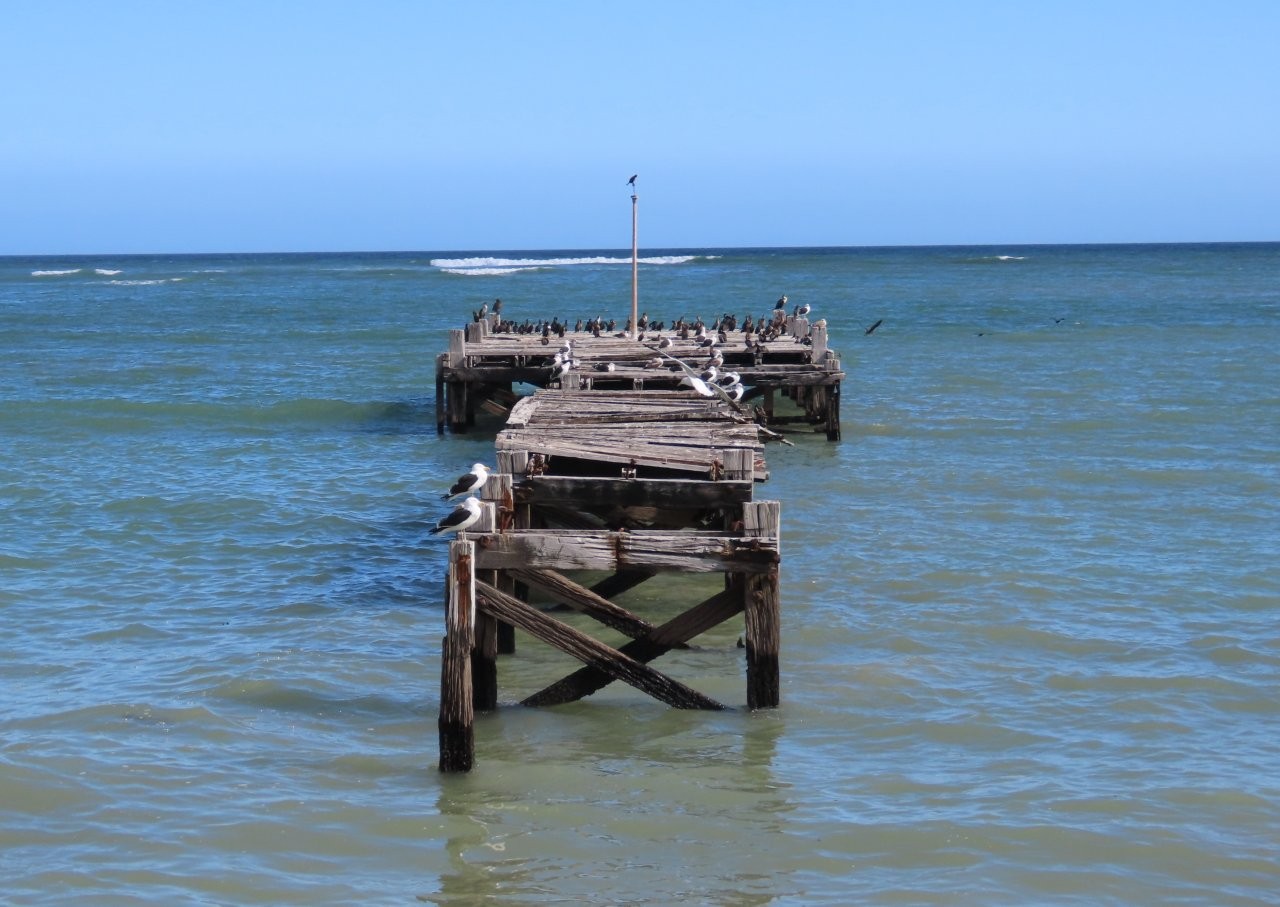For us nothing can beat a bite of kinglip and chips.

We always visit the old jetty when we go to buy the fish, as it holds a special fascination for me.
That jetty has a rich history, and although it was maintained over the years, eventually the special hard wood became unavailable. So now a decision was taken to allow the ocean to take the jetty back.
Kingklip is a special type of fish, and it's a delicacy on many family tables here. Let's see what Wikipedia has to say about Kingklip fish.
Genypterus capensis, commonly known as kingklip, is a species of cusk eel occurring along the Southern African coast from Walvis Bay in Namibia to Algoa Bay in South Africa. It is closely related to Genypterus blacodes from New Zealand. The species grows to a maximum length of 180 cm and a weight of 15.0 kg. It is one of the most popular fish items on South African menus. Despite appearances, it is not closely related to the eels of the order Anguilliformes.
Seated atop the pole at the end of the jetty was a Cape Cormorant.
Here below, you can see that half of the jetty was already reclaimed by the sea.
And this is a seascape (landscape) of the jetty. In the warmer days this beach is packed with people, but still a bit too cold now so early in spring. During the holidays one can hardly move here.
A seagull in flight.
And another seagull passed across the sun.
Clouds started to gather at the beach, and so we picked up our order and were out of there.
Finally, this view below back home.
I cannot understand why people would say that Kingklip fish is an eel, and here is some more information about Kingklip.
Andrew Smith, the redoubtable Scots explorer and zoologist, first described the kingklip species in 1847 from a specimen caught near the entrance to Table Bay and named it Xiphiurus capensis ('xiphos'=sword, 'oura'=tail). His description was published in "Illustrations of the zoology of South Africa", an account of the natural history objects he collected during his expedition into the interior of South Africa in 1834-36. It was also described by the German naturalist Johann Jakob Kaup in 1858 and named Hoplophycis lalandi.
That beach where the jetty is located is just a part of the beach that stretches for about 25km long, and during summer it is all white sand. Best to stay away from the beach during holiday periods as one faces a hard time to find a safe parking spot, and if one intends to visit during the holidays, then one would see a sea of sun umbrellas with sunbathers below them. We don't like crowds, and thankfully there are a few deserted spots at the beach, mostly filled with rocks and no swimming is allowed. Such is life.
I hope you enjoyed the pictures and the story.
Photos by Zac Smith. All-Rights-Reserved.
Camera: Canon PowershotSX70HS Bridge camera.
Thank you kindly for supporting this post.